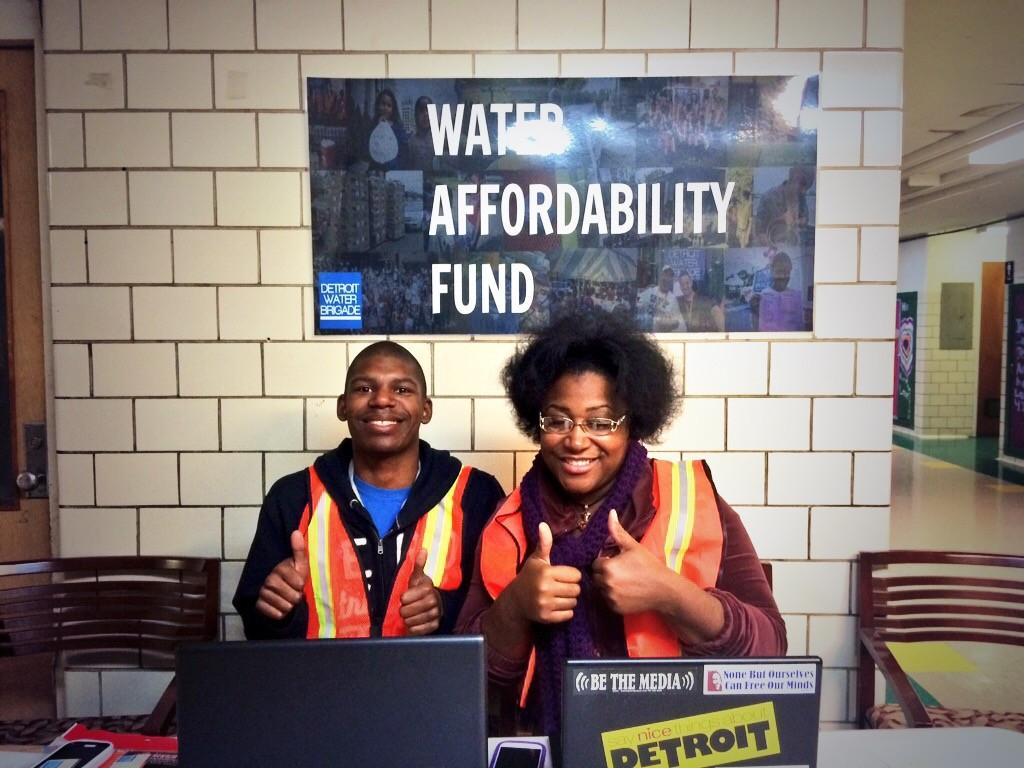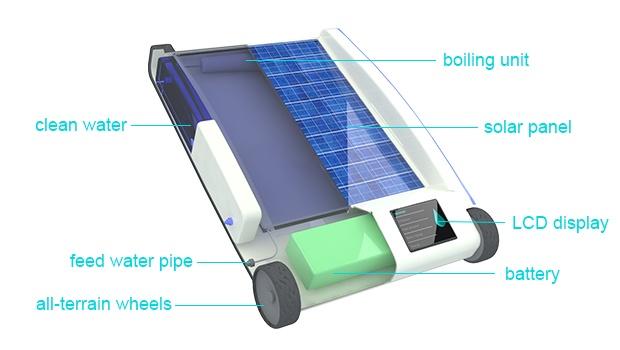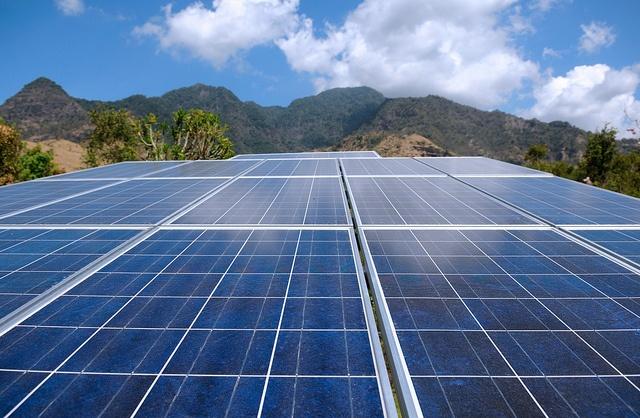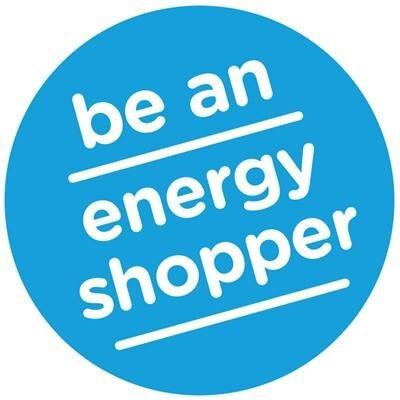How Driverless Cars Will Impact the Environment


By Scott Huntington
When hybrid cars first came onto the scene and were promoted as a potential solution to climate change, the world took notice. It seemed developed nations were finally going to be able to curb their carbon emissions and enter a new paradigm of eco-friendly road technology.
Despite the hype surrounding hybrid vehicles and what they represented — something that attracted a wide variety of comments from both sides of the fence and a great many debates — the real-world application of these vehicles required humans to adopt the design and function of the vehicles in question.
Hybrid cars were not something everybody wanted, and now in 2015, there is a new contender in a service that people have praised in recent times. We’re of course talking about “driverless cars."
Are driverless cars going to provide solutions?
Across the U.K. and the U.S. in particular, driverless cars have surged in popularity due to companies such as Google and Uber entering the ring in attempts to corner the market. But what does this really mean for the environment? And are automated cars actually going to have any impact at all in the medium- to long-term?
A concern is whether driverless car development companies are going to rely on fossil fuel-driven technology such as combustion engines or make the effort to switch to automated electric vehicles. Dr. Gregory Offer from Imperial College London believes this is the only way the technology can maximize its economic and environmental benefits.
The facts and figures of the situation
For some perspective, if only 10 percent of the cars on the road were self-driving, 102 million gallons (or 386 million liters) of gasoline would be spared. This represents a significant improvement over the current status quo and is a big step toward embracing a non-destructive energy sources.
If that figure were to rise to 20 percent, an impressive 724 million gallons (or 2.7 billion liters) of fuel would be saved. This creates a causal link and would put the global economy on track toward a better future.
One of the features that many are looking forward to is the ability for these driverless cars to drop passengers off and then park themselves. According to the Rocky Mountain Institute, it’s their driving efficiency that may prove to be the tipping point as 20 to 30 percent of fuel usage could be eliminated without the need to find parking. However, this advantage also presents a problem.
Assuming the world becomes highly autonomous and driverless vehicles become ubiquitous, they may also become passenger-less. In light of this, those same positive statistics relating to optimized efficiency can be used to present a solid argument.
Effects on the demand for energy
Another concern is driverless cars may cause a surge in people’s demand for energy as more will have access to the technology. It then follows that more people would be inclined to drive and forego public transport as an alternative.
As a matter of human priorities, Don MacKenzie, assistant professor of Civil and Environmental Engineering at the University of Washington and someone who has analyzed automated driving pathways with colleagues from the University of Leeds in the U.K. and the U.S. Department of Energy’s Oak Ridge National Lab, believes that such factors could lead to a 160 percent increase in our need to travel by car.
With such considerations being given less time as opposed to the benefits, driverless cars may not present the best way forward. And it will be some time before any actual environmental impact is known, and by then it may be too late to turn back.
The future of the environment and driverless cars
While driverless cars certainly present many positives, they’re not going to solve all our problems. In this way, driverless vehicles herald a greater shift in societal innovation more than they are a technological revolution.
And while this technology may certainly improve our lives to no end, autonomous vehicles should not be touted as a solution to any impending energy crisis just yet, as the prevailing opinion among skeptics is that they will not save us from ourselves. Here’s hoping that technological advances will help the driverless car become a better answer to environmental concerns.
Image credit: GmanViz, Flickr
Scott Huntington is a writer and blogger. Follow him on Twitter @SMHuntington.
How the Mobile 'Kill Switch' Will Help Businesses and the Planet


By Jessica Oaks
Americans spend $2.6 billion each year to replace stolen smartphones, not including the cost of handset insurance. The consequences of losing these high-value devices are dreaded and very much unwanted. In response to mobile-device theft, kill-switch technology is gaining momentum as a viable solution. A 'kill switch' allows smart device owners to lock and/or wipe their phones remotely once taken from possession. Aside from consumers, mobile kill switches also impact businesses positively, and, moreover, the planet as a whole is better off with this technological implementation.
Businesses, especially large corporations, often utilize the latest technology around. This means providing employees with smartphones to enable increased work production and mobility via emails, office apps, shared documents and Internet connectivity. Often times, syncing data happens automatically across any company-owned device with network connection intact. Synced technology has been a game-changer in terms of optimizing operational efficiencies. However, it does make connected devices susceptible to abuse should a non-authorized party get ahold of said gadgets. If even one employee loses their phone to an “Apple picker,” aka a smart phone robber, aside from the monetary loss, private company information is now in the hands of someone who could potentially leverage it to destroy the business and, in the bigger picture, impact potential economic flow and overall safe well-being around the world.
An extreme but extremely possible situation that could take place is, for example, a smartphone thief who has hacking capabilities uses their sticky fingers to gain access into an establishment’s private stock information and bank accounts: It could pose a detrimental trickle-down effect, and it’s something not outside the realm of affecting the rest of the world, as many businesses are connected to other businesses and industries. Leveraging insider intelligence and spreading it in a viral manner to powerful parties is all it takes to take down a massive amount of people.
Luckily, technology is being rapidly developed by innovators like Qualcomm to equip mobile devices with kill-switch capabilities. On top of anti-theft software being installed by default, the tech giant is producing a kill switch-equipped, Snapdragon processing chip that will lie within the hardware to add an extra level of security. With the integration of this sort of automatic kill switch, companies will have the ability to protect proprietary information by remotely 'killing' stolen devices and/or wiping data within company phones, possibly saving the economic lifeline of business.
Apart from fiscal safety, a greener planet could result with a subsequent decrease in mobile device theft. So goes the saying, a little bit goes a long way – think, if technology manufacturers didn’t have to account for the large number of replacement devices that needed to be produced, its carbon footprint would get smaller in that aspect. Fewer phones would need to be made, and phone manufacturers might actually start building phones to be even more efficient and environmentally suitable in order to last longer. Furthermore, the previously mentioned $2.6 billion spent on replacing phones could go toward better causes – maybe even causes concerning improvement of the human race and the planet. Now, all these thoughts may be far-fetched, but they are not impossible. And the kill switch opens the door of possibility for these altruistic visions.
A world with protected businesses and deterred hackers could mean a world with less theft and a better-run planet. Starting in July, California will ignite the change with its bold, statewide kill-switch law that calls for all smartphones to be produced with a default mobile kill switch. This huge step is about to spike a revolution in the mobile device industry, it just may create a more peaceful and sound environment for all.
Image credit: Flickr/Adam Fagen
Jessica Oaks is a freelance journalist who loves to cover technology news and the ways that technology makes life easier. She also blogs at FreshlyTechy.com. Check her out on Twitter @TechyJessy.
Schools turn up the heat to win solar competition


Twenty two schools from across the UK are being given the chance to win up to £5,000 towards buying their own solar panels thanks to Good Energy, the renewable electricity supplier and generator.
The schools, which are all part of carbon cutting campaign 10:10’s Solar Schools programme, are currently fundraising for solar panels. To win one of the three cash prizes - £5,000, £3,000 and £1,000 – to put towards their total, Good Energy is asking the schools to ‘get creative’ with their thoughts and ideas around renewable energy, solar power and climate change.
“We’re asking them to produce some artwork, sculpture, poetry, prose, collage – pretty much anything goes! – which shows what these topics mean to them” said Charmaine Coutinho from Good Energy. The schools have until March 18th to submit their creations, and judging will take place over the Easter period.
“The participating schools are already doing a great job in attracting funds from their community so they can install solar panels but they’ve a way to go yet before they can buy any panels,” said Cecily Spelling from 10:10 Solar Schools.
“This extra ‘pot’ from Good Energy is a great incentive for the schools, and we’re really looking forward to seeing what they come up with!”
Detroit Water Shutoff Crisis: Public Water Brigade Grows


Last September, as Detroit residents were still in the midst of 80-degree summer weather, the city's water department went to court. Its issue was the 27,000-some customers who were getting Detroit water but weren't paying their bills.
As of March 2014, the Detroit Water and Sewerage Department (DWSD) was missing about $175 million in water payments, almost $100,000 of that from residential customers who had lost their jobs or couldn't afford the hefty water bill last summer. Residents were already paying an average of $64 per month water access. With an 8.7 percent increase in June, many unemployed residents and individuals on Social Security Income checks couldn't afford water for cooking, washing and basic needs.
With the city's bankruptcy the year before, much of DWSD's extensive coverage area was now being consolidated into a new company, the Great Lakes Water Authority, which would assume water services for the city's suburbs. That left the city of Detroit's old water system to manage its bills with a smaller customer count, much of which was represented by low-income neighborhoods hit hard by layoffs and other financial problems from the recent recession.
DWSD's trip to bankruptcy court on Sept. 29 made worldwide news after U.S. Bankruptcy Judge Steven Rhodes refused a request for a temporary moratorium on the water shut-offs that the department had initiated in June.
"There is no such right or law," said Rhodes, disagreeing with a United Nations declaration that "water is a fundamental right."
By November, DWSD had disconnected more than 30,000 accounts, with the highest monthly number (7,200) occurring in June, when the hot weather was ramping up, in a city that has an average of 50 heat-related deaths per year.
The crisis has prompted outrage across the country, protests on city streets and water shipments from concerned Canadians on the other side of the border. It also inspired an ingenious, if not simplistic, response: Let Detroiters help other Detroiters get water.
Detroit Water Brigade, which began in June 2014 at the start of the shutoffs, is designed to do just that. According to the organization's website, it was kicked into motion when one of its co-founders, Danny McGlashing, founder of Occupy Sandy, wrote a proposal for a temporary citizen-led initiative to provide "[interim] water relief for residents in single family homes and apartment/condo units who’re experiencing water shutoffs." Along with other activists and artists that include Justin Wedes (who founded the Paul Robeson Freedom School) and Boston Radio personality Rodney Deas (Radio Rahim), McGlashing instigated a movement to provide water to those who couldn't afford to pay their looming water bills and had been shut off.
The project could have easily remained small, limited to a few dozen neighborhood blocks, but it didn't. It mushroomed, propelled by the burgeoning number of households that were now without water. According to Wedes, the Brigade quickly realized that handing out containers of tap water on a daily or weekly basis wasn't the answer. People needed ways to survive and to increase their independence.
In addition creating a means to stockpile drinking water for hot weather and general population needs, the brigade came up with collection systems by which people could collect rainwater and purify it for drinking purposes, as well as an emergency fund to help people reinstate their access to water.
"The DWB continues to provide emergency water deliveries to families across Detroit," said Wedes in a recent interview. "We've also implemented a financial assistance program, called the Water Affordability Fund, for families to get help paying their water bills to restore access.
Before winter set in, the Brigade had also started a collection of cold weather gear to ensure that those left without hot water or power would have one more layer to protect them from Detroit's icy winters. And they started the groundwork toward creating an "sustainable eco-village," called Avalon Village, that would include its own rainwater collection system.
"The eco-village will model alternative water collection, retention and sewerage systems that we hope will inspire changes in the way municipalities deal with water," he said.
Wedes, who is best known for his work with the Occupy Wall Street movement, admits that there are still significant hurdles to overcome.
"The winter has brought its own new challenges: Families that can't afford gas have their heat cut, and the water shutoffs continue. Also fires are more prevalent in the winter, as people who are heating their home with ad hoc methods inadvertently start fires."
But the groundwork seems to be paying off. There are now more than 20 different water collection hubs in Detroit, backed by a network of hundreds of volunteers and organizations of all backgrounds.
"We have partnered with many organizations, including Auntie Na's Community Center, the House of Help Community Center, several churches [and] synagogues, Wayne State student groups, and the Universities of Michigan, Bowling Green State, Central Michigan and Eastern Michigan," Wedes said.
And the initiative has continued to gain international support. In November, Detroit Water Brigade activists flew to Dublin, Ireland, another city hit by water accessibility issues, to take part in water protests.
Icy weather has slowed down some of the shutoffs, but the group expects the process to continue on, adding even more need to a finely-tuned network of volunteers who can help get water and supplies to those in need. Wedes says they're now up to 500 volunteers who expect to be out in force as the weather continues to warm.
Which it is expected to do. The Detroit Climate Action Collaborative says Detroit temps are on the way up, and have been increasing since at least 1959. It looks like the Detroit Water Brigade may very well be needed next summer if the city isn't able to solve its economic and humanitarian challenges.
Images credits: 1 and 3) Detroit Water Brigade; 2) Matt Gowing 4) Jeffrey Smith
Portable Distillation Unit Cleans Sea Water on a Sunny Day


A number of solutions have been put forward to address the daunting problem facing roughly a billion people on this planet: a lack of clean, safe drinking water. Climate change is only making the problem worse. Some experts say that 50 percent of the global population will experience some form of water stress by 2030.
A large percentage of these people live near an ocean. Since 97 percent of the world’s water is found in the ocean, it makes sense to use sea water, if possible, as a source that can be purified or desalinated for drinking and cooking purposes. Although desalination tends to be energy-intensive and costly, it has inspired a number of recent improvements.
Among the solutions aimed at this sizable opportunity is a large-scale solar desalination plant in Saudi Arabia, a joint effort between IBM and the King Abdulaziz City for Science and Technology. This approach uses concentrating solar power (CSP) to drive a nano-membrane reverse osmosis system.
Another project in France uses wave power to generate mechanical pumping action that forces seawater through a set of reverse osmosis filters. A smaller, portable solution has been developed by a team at MIT. This system, which is primarily intended for disaster relief, features a set of solar panels, a water storage tank, a desalination pump and a filtration system.
A new solution was recently announced by Desolenator, a London-based company that launched its first product with a successful $150,000 Indiegogo campaign. Like the MIT product, it too is portable, but it differs from all the systems mentioned above because instead of relying on reverse-osmosis filtration, it purifies dirty water -- including sea water -- by distillation: the simple process of boiling the water and then condensing the steam back into a liquid. While simpler and less reliant on specialized filter materials than RO systems, the need to boil the water requires a great deal of energy.
That’s where there innovation kicks in. While most solar photovoltaic systems try to eliminate heat since it does not contribute to the generation of electricity, the Desolenator captures the heat using insulation, and then uses it to preheat the water to the point where it is nearly boiling. This reduces the amount of energy required to complete the process in a small integrated boiler powered by the solar panels. A single solar-powered unit can provide 15 liters of clean water per day, enough for the drinking and cooking needs of a family of six.
In a sense, it’s a form of combined heat and power (CHP), a technology usually associated with fossil fuel power plants. A few years back I wrote about a couple of other companies, Naked Energy and Cogenra, that combined solar PV and solar thermal, though neither of these used it for desalination.
Inventor and CEO William Janssen told the BBC that the Desolenator can produce desalinated water less expensively than any other option available.
The product has been recognized in various venues, including winning second place in the Climate KIC launchpad (Europe’s largest clean tech business idea competition) and being shortlisted for an Ashoka Award.
The company plans to use the funds raised in the Indiegogo campaign toward a pilot program that will eventually put 1,000 Desolenator units in a village in Tamil Nadu, India -- a next step on the road to scale.
This seems to be a very promising idea, though I do have a couple of caveats. The company's slogan -- "Water independence, just add sun” -- is a bit misleading, since it implies that the unit can simply pull water out of thin air. This is theoretically possible. Dehumidifiers do it, but this device does not. What it does requires an input water source which is then purified using only the power of the sun.
Other minor concerns worth mentioning include the fact that desalination produces distilled water, which is characterized by an absence of minerals often found in naturally occurring water. Experts differ as to the health impact of drinking distilled water. Surely it is better than drinking contaminated water, but over the long term, mineral supplements might be required for optimal health.
Any desalination process will also produce salt as a byproduct. At its rated 15 liter output, the Desolenator is likely to extract approximately one pound of salt per day. By design it maintains the salt as brine to avoid clogging the pipes, cleverly removing additional heat in the process. At some point, though, this brine will need to be removed and responsibly disposed. According to CEO Janssen on this point, "The brine flow (residual salt in seawater) is not an issue in [the] case of the Desolenator technology. The rate of flow of water through the system is relatively high. This means that the salt content of the water coming out of the system is hardly any higher than the seawater going in. Thus the brine water can be disposed of without any objection."
I won’t argue, but it’s probably not something you want to water your vegetable garden with. Better to salt those veggies after they’re cooked. In an ideal world, I would think, the brine would be returned to the ocean, or upcycled in some constructive way such as adding it to mud to make stronger bricks.
Image courtesy of Desolenator
RP Siegel, PE, is an author, inventor and consultant. He has written for numerous publications ranging from Huffington Post to Mechanical Engineering. He and Roger Saillant co-wrote the successful eco-thriller Vapor Trails. RP, who is a regular contributor to Triple Pundit and Justmeans, sees it as his mission to help articulate and clarify the problems and challenges confronting our planet at this time, as well as the steadily emerging list of proposed solutions. His uniquely combined engineering and humanities background help to bring both global perspective and analytical detail to bear on the questions at hand. RP recently returned from Abu Dhabi where he attended the World Future Energy Summit as the winner of the Abu Dhabi blogging competition.
Follow RP Siegel on Twitter
More Signs of Solar Energy’s Upside in India


Editor's Note: A version of this post originally appeared on the Institute for Energy Economics and Financial Analysis blog.
By Tim Buckley
A sea change is gathering in India as the country contemplates embracing the promise of solar-powered electricity.
You can see it at the ballot box, through the prism of international diplomacy and in the capital markets.
India, keep in mind, is among the top 10 economies in the world, is already the third largest electricity market globally and is second in population only to China. Its clean-energy growth potential is gigantic.
Grassroots support for energy reform is substantial, seen most recently — and in stunning fashion — earlier this month in the Aam Aadmi Party’s win in the Delhi state elections. It wasn’t just an unexpected setback for the ruling party but a jarring reminder that the masses of India have enormous clout. A central issue in the election was making electricity both more sustainable and more affordable for the poor. One way to do that: solar.
Investment in solar caught a wave in January with President Barack Obama’s arrival at the annual Vibrant Gujarat Summit — which promotes investment in India’s emerging economy. President Obama's presence yielded the promise of $4 billion in U.S. government financing of India’s electricity sector by the Import Export Bank of the United States, the U.S. Overseas Private Investment Corp. and the U.S. Trade and Development Agency. Most of that financing will go toward developing India’s electricity sector, primarily its renewable-energy sources.
I expect this theme of access to global capital for renewable infrastructure in India to play out as a key prerequisite for any emission-control pledges from India going into the U.N. Climate Change Conference this year in Paris. India’s new renewable energy goal is ambitious, requiring upwards of $200 billion in financing.
Look for potential commitments here from the Asian Infrastructure and Investment Bank, KfW Development Bank, China Development Bank and the UNFCCC’s Green Climate Fund as precursors to private global capital flows.
In the meantime, India’s coal imports have slowed considerably in response to accelerating domestic self-sufficiency. Its appetite for coal imports rose only 3 percent year-over-year to 15.8 metric tons in January (down 21 percent from December), a significant drop relative to the double-digit growth evident over 2014. This is important in part because it calls into question one of the assumptions of foreign producers that are pushing their product on developing economies — that India needs more coal from Australia and the U.S.
In India, this assumption is being dismissed openly, as in a recently published interview with Energy Minister Piyush Goyal: “At no point of time do I feel that imported coal will work except at two or three plants that are in the coastal areas,” Goyal said. “I did a study and found that there were very few plants dependent on imported coal or were situated on the coast.”
This is all being said and done against the backdrop of a national solar-installation boom that is gaining momentum with a total of 160 gigawatts of projects on the drawing board by a multitude of companies. Plans include a 5-gigawatt project proposal by the Adani Group, following its commitment last month with Sun Edison, the U.S. company, to invest an additional $4 billion in solar module manufacturing in Gujarat.
Political leadership is crucial, and Prime Minister Modi has shown he fits the bill. Modi has repeatedly and persuasively promoted solar as a solution to energy poverty.
He did it again this week: “We are focusing on renewable energy not for laurels but to lighten homes of the poor and bring a change in their lives,” Modi said. “We have ponds, can we think of solar panels on top of these ponds? We need to think of innovative ideas.”
Image credit: Flickr/Bart Speelman
Tim Buckley is IEEFA’s director of energy finance studies, Australasia.
Italian Yacht Designer Christian Grande Proposes Posh Floating Village


Perhaps fretting over climate change and rising ocean levels is a waste of time. After all, with over 70 percent of the Earth’s surface covered by water, there is plenty of room for floating communities to house the world’s population. It could eliminate the need for massive seawalls, skyrocketing insurance rates and a boost in hiring for the U.S. Army Corps of Engineers. Ideas for floating villages keep popping up, and why not? The automakers always tease us with concept cars, so why not have concept floating villages?
The latest idea is from famed yacht designer Christian Grande of Italy with his recently presented AbiFloat, which combines modular building and luxury. (Based on the size of his yachts, Grande already has designed a floating village.)
Combining the best ideas we've seen in the magazine Dwell and HGTV, Abifloat allows for “living in nature without borders,” and its homes’ designs would integrate into the local landscape, Grande said. The homes would be built out of lightweight and sustainable materials including aluminum, recycled plastic, straw and cork. Measuring 21 feet by 11 feet (6.5 by 3.25 meters), the structures could function as “modular reference points” and could be snapped together to make even bigger “superstructures.”
The photos are certainly fantastic, and the project is an enjoyable one to read about. So, is this the next wave of green building?
The idea of floating cities goes back to Homer’s "Odyssey" and has earned the words of countless writers, including Jules Verne and Isaac Asimov. Their appeal is certainly understandable: navigating the oceans, which are still really our final frontier; the ability to live beyond borders and bureaucracies; and testing out new technologies to accomplish everything from generating power to growing food.
And some groups are already pursuing the concept of a floating city. The Seasteading Institute claims such a project is only a few years away. Founded by a grandson of Milton Friedman, the organization backing the Floating City Project has completed a feasibility study, explored various designs and says it is working to find a nation to host the city. A 2013 crowdfunding campaign launched to fund research for a white paper had a modest goal of raising $US20,000 — and raised US$7,000 more than expected.
The Seasteading Institute builds on the idea behind The World, a 644-foot-long ship that boasts 165 condominiums, but is more for the exclusive and reclusive. Not to be outdone, the Freedom Ship promises a 4,500-foot-long, 350-foot-high floating palace complete, of course, with a shopping mall. But again, this is a complex that showcases features such as casinos, not composting or next-generation aquaculture. If the idea of floating communities is going to take root (or, actually, take afloat), they will have to appeal to the masses — otherwise we will just see a few more massive floating baubles.
While ideas such as those of Grande or Jacque Fresco make for interesting reads, they do not really talk about the difficult questions, as in how they will generate power, grow food and, most importantly, dispose of waste. Are these floating villages really just going to link up on shore every so often and hook up to a massive septic, as if they were gigantic RVs?
But like the American and Russian (and perhaps Chinese) space programs, the development of floating cities may not change the world, but the trend will definitely have its effect through the development of new technologies. New ideas to generate clean energy, dispose of waste, and grow food in an environment that's saline but nutrient-rich could result from these ideas that sound farfetched now, but could edge towards reality in a more crowded world.
Image credit: Christian Grande
Based in California, Leon Kaye is a business writer and strategic communications specialist. He has also been featured in The Guardian, Clean Technica, Sustainable Brands, Earth911, Inhabitat, Architect Magazine and Wired.com. When he has time, he shares his thoughts on his own site, GreenGoPost.com. Follow him on Twitter and Instagram.
Michigan Municipal Leaders Protest Rate Increase for LED Lights


Earlier this month, DTE Energy announced a rate hike for LED lights. The decision sparked anger in Michigan city officials involved in municipal streetlight conversions, who would see their financial incentives for energy conservation diminish. At the same time, DTE plans to lower its rates on sodium lighting, which can use up to three times more electricity than LED.
In 2014 Ypsilanti, best known as the home of Eastern Michigan University, converted all 1,100 of its streetlights to LED -- making it the first Michigan municipality to do so. City leaders worked with DTE Energy on the project and expected to see substantial annual energy savings. In the first year, the municipality's DTE energy bill was 29 percent lower, saving $176,000. Now, with DTE’s proposed rate increase, Ypsilanti’s city leaders are seeing their expected savings disappear.
To pay for the streetlight conversion, Ypsilanti required all homeowners to contribute $114 per parcel, a fee that was hard for residents to swallow, but the city was sure would result in future savings. Now, city leaders feel misled by DTE, saying the company never mentioned the rate increase during the conversion project.
"We worked with DTE Energy for more than a year on the switch to LED streetlights and at no point in the discussion did they warn us that LED lights would cost more than old high-pressure sodium lights. If this rate hike happens, we'll really feel like this was a bait and switch," Ypsilanti City Council Member Brian Robb told MLive.
Other officials and environmental leaders are dismayed because they believe the LED rate increase will discourage other Michigan municipalities from converting and saving energy. The rate proposal also includes a 3.2 percent increase for homeowners.
"Purely on financial grounds, no one is going to switch to LED. Instead, they're going to use twice to three times more electricity to light up the street," Rick Bunch, director of the streetlighting consortium for the Southeast Michigan Regional Energy Office that is working with metro Detroit communities to convert to LED, told MLive. "The municipalities would never make back their investment because sodium would absolutely be cheaper."
DTE supplied Bunch and other leaders with documents detailing the increases. Sixty-five-watt LED bulbs would see an increase of 10 percent, from $138 to $154. The 135-watt LED bulbs would go up 12 percent from $157 to $178.
At the same time, DTE is proposing to decrease the cost of running 100-watt sodium bulbs -- which require much more electricity -- by 20 percent, from $184 to $149 annually. And the 250-watt sodium bulb rate will go down 7 percent from $235 to $220. DTE plans to also raise costs for mercury vapor lamps, but by less than LED.
In Ypsilanti, the rate changes could effectively wipe out the future savings the city expected and mean that the residents spent $500,000 on streetlight conversion with no financial benefit, although of course they will still save energy.
DTE released a statement saying that the original LED rates were “experimental,” and now that the company has more experience working with LED technology, it is adjusting rates accordingly to cover costs. But Bunch and others cannot find a justification in the DTE documents they were given. And Bunch says that LED technology is traditionally not only more energy efficient, but also cheaper to install and maintain.
Why don’t the municipalities simply use another utility company if they don’t like the rates? Michigan has a utility monopoly preventing most consumers from choosing their own utility company.
“Michigan has a cap of 10 percent for alternative energy suppliers," Jarrett Skorup wrote in Michigan Capitol Confidential. "That is, 90 percent of the market share of energy at the generation level is guaranteed to the major utilities — Consumers Energy and DTE Energy, in their territories. The major utilities continue to have a 100 percent monopoly in distribution of electricity, and charge alternative suppliers for providing distribution over their regulated distribution networks.”
Michigan consumers could choose their energy providers from 2000 to 2008. But in 2008, a bill was passed putting the cap in place along with a 10 percent renewable energy mandate (an amendment to raise the renewable energy mandate to 25 percent failed in 2012). The state reached its 10 percent alternative supplier cap by 2009, and now customers who want a different supplier have to go on a waiting list until space opens up. To date, more than 10,000 customers have chosen an alternate supplier, and 12,000 remain on the waiting list which grows each year.
Ted Bolema, an adjunct scholar for the Mackinac Center for Public Policy and a senior policy editor with the Mercatus Center at George Mason University, told Michigan Capitol Confidential that Michigan has the highest electricity prices of all the Great Lakes states. It also has the highest energy rates of any state that gets more than half its energy from coal, Bolema said.
Energy prices have been rising more rapidly in states with less competition, like Michigan. Illinois consumers can choose their energy utility. When Michigan had free choice, the two states had comparable rates: Since Michigan imposed its cap limiting choice, Illinois rates are 30 percent lower. (Michigan’s energy rates increased 27.2 percent from 2008-2012.)
In December 2013, House Bill 5184 was introduced to repeal the energy monopoly, but there has been no resolution. Both Consumers Energy and DTE have opposed lifting the cap, saying it would lead to higher prices -- although a study by the Illinois Chamber of Commerce shows that Illinois consumers are spending $37 billion less since they were awarded free choice for energy suppliers.
DTE’s proposed LED price hike will be voted on by the Michigan Public Service Commission within a year. If no action is taken by July 1, DTE will implement the increase. If the rate increase is ultimately denied, DTE will have to refund the money it collected back to its customers. Individuals and organizations can submit their opposition to the increase to the Commission for review and the list of organizations opposing the rate proposal keeps growing. The outcome of the votes for the rate increase proposal and House Bill 5184 will have a big impact on energy rates, energy conservation and supplier choice in Michigan in the future.
image credit: Greg Goebel, Flickr creative commons license.
Adidas Group Exceeds Sustainable Cotton Target


The Adidas Group made a big announcement this week: In 2014, the company sourced more than 30 percent of its cotton as Better Cotton, exceeding its original 25 percent target. That is the most sustainable cotton used in the company’s history.
The majority of the Better Cotton sourced by Adidas came from India, Pakistan and Brazil. The company will provide more information about its progress in its 2014 Sustainability Report, scheduled for release in April.
Adidas has set a goal to purchase 100 percent of the cotton it uses from sustainable sources by 2018. It aims to use 40 percent Better Cotton by 2015. The athletic wear brand’s goals on cotton are part of its overarching sustainability strategy, which includes a low-waste initiative.
Why is Adidas’ announcement so important? The Better Cotton Initiative (BCI) serves as a way for companies to work with the cotton sector to create a more sustainable system. BCI’s Better Cotton Standard System includes a traceability system, and farmers in 19 countries are using it to produce Better Cotton.
“At the Adidas Group, we are constantly trying to increase the use of more sustainable materials for our products, and Better Cotton is a clear success story for us,” said John McNamara, Adidas Group SVP of sourcing. “As a founding member of the Better Cotton Initiative, we firmly believe that Better Cotton is well on its way to becoming a sustainable mainstream commodity. We will continue to increase the amount of sustainable cotton we use over the coming years.”
Back in 2013, the company mentioned the state of the world’s cotton industry in a blog post. Cotton farmers harvest 100 million tons of cotton annually, and all that cotton farming can cause pollution: About 10 percent of all pesticides used globally are used by cotton farmers. The defoliants used by cotton farmers are particularly potent. I can barely stand to be near the cotton farms in my native San Joaquin Valley of California when farmers defoliate in the fall. I can’t breathe through my nose, and my head hurts.
Environmental problems are not the only ones plaguing the cotton sector. There are also labor violations in some countries. Uzbekistan stands as perhaps the worst example, where the government forces adults to pick cotton, according to Cotton Campaign. Uzbekistan is one of the world’s largest cotton exporters. The profits of the cotton industry support only the government and not the people who grow or pick the cotton. The situation in Uzbekistan is a unique one in the world. Although Uzbekistan cotton farmers and workers can’t presently benefit from the BCI, the organization states that it “welcomes” the day when they will be able to benefit from its methodologies that include human rights. And companies like Adidas help make that day possible.
Image credit: Martin LaBar
New Energy Campaign Fails to Consider Businesses


By Hannah Corbett
Last week, the U.K. Department for Energy and Climate Change (DECC) launched a new campaign – ‘Power to Switch’ – to encourage domestic energy consumers to actively engage with the market and switch their energy to a better deal. Not only does this immediately benefit consumers with monetary savings, but it also has a number of long-term benefits, such as getting people involved and engaged with their energy usage. This will only promote an awareness of energy consumption, and contribute to sustainability in the long term. However, the campaign focuses solely on domestic energy customers and neglects to take businesses into account.
Given that around 60 percent of all energy in the U.K. is used by non-domestic consumers, it would stand to reason that getting business energy customers clued-up and involved with the energy market has the potential to make the changes that the government and industry authorities are calling for, while also having a huge impact on energy efficiency and sustainability. But, with the Power to Switch campaign firmly targeting domestic customers, businesses are being left out in the cold.
It seems there’s a need for some light to be shed on the commercial energy switching process, and why businesses stand to benefit by engaging. Read on to find out more.
The business energy-switching process
There are a few steps in the energy-switching process – but nothing too difficult. Depending on your business’s situation and your current contract, there may be a couple of things that you need to do.
If you don’t already know, the first thing to do is to figure out who your existing supplier is, as well as the terms of your current contract. Then, you’ll be able to directly compare your deal with others and see if you could be paying less. If you’re not currently in contract with a supplier, then you will almost definitely be able to save by switching suppliers or negotiating a better deal, as ‘out of contract’ rates are often far more expensive than the market average.
Can you switch?
As a business energy customer, you’ll only be able to enter a new energy contract if your renewal window is open. Typically, this starts 60 days before the end of a contract, and your supplier should notify you when it opens. Unfortunately, if your renewal window is not due to open soon, then you’ll have to sit tight until it is. If you’re currently out of contract, then you will be able to switch immediately, but you’ll have to give your existing supplier 30 days notice.
Find the best deal
One of the easiest ways to compare available energy deals across the market is to use a comparison service to search the market, find you a good deal and handle your switch for you. Alternatively, you could contact a number of suppliers individually, then make a decision based on the best offer you get. You may want to consider signing up with a green energy supplier, as they often have good deals available, and give more support to sustainable energy options than others.
Commit the switch
All you have to do is inform your current supplier that you will be switching, and agree a contract with your new supplier. They will be able to handle the rest between them. As aforementioned, you will probably have to give your current provider a certain amount of notice before your switch can take place – so the sooner you start, the sooner you can benefit.
What are the benefits of switching?
It's true that you could save a significant amount of money each year by being proactive and taking control of your energy deals. This counts as a direct boost to your business' bottom line, or will allow you to free up some funds to be invested elsewhere. But there are other benefits involved, too.
You are also helping to safeguard the presence of good business energy deals in the future. The more businesses that show they’re savvy by shopping around, the more competition that generates in the market. Competition puts pressure on suppliers, which ultimately has the power to lower prices. This is exactly what’s beginning to happen in the domestic energy market – where prices keep dropping and deals are getting cheaper – and there’s no reason the same can’t be true for commercial energy customers. As such, if more businesses were to switch to green energy suppliers, then that would drive more competition amongst renewable energy suppliers – pushing the price of green energy down for all.
Another one of the biggest perks is the impact that engaging with the energy market can have on energy efficiency and sustainability: Once you switch your energy supplier, you'll probably find that you're more aware of just how much energy you consume. For many business owners, this is because they don't want to jeopardize any savings they've just made on their energy -- and it's no secret that improving your efficiency is a great way to cut those costs even more.
Ultimately, the bottom line is that business energy customers need to make the effort to engage with the business energy market. With recent government and industry focus mainly on domestic consumers, businesses may have to take it upon themselves to make the first move. It makes sense to encourage businesses to actively engage with the energy market, as it could benefit the individual businesses, the wider economy and sustainability, too.
An experienced writer and marketer, Hannah is passionate about small businesses, and endeavours to help them in any way she can. Usually, this amounts to writing and spreading information, tips and tricks for small and medium sized businesses across the web. She often writes for Make It Cheaper: a small business electricity switching service. To keep up with Hannah’s latest musings, you can follow her on Twitter, or connect on Google Plus.